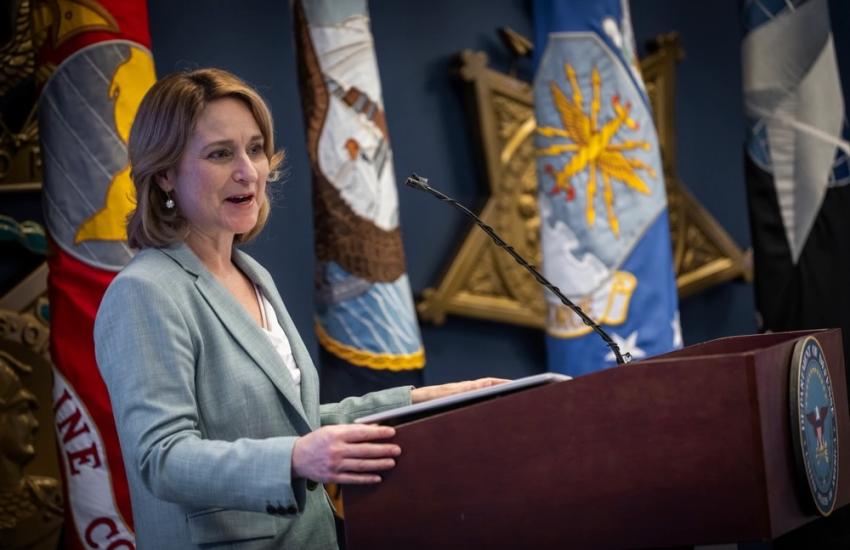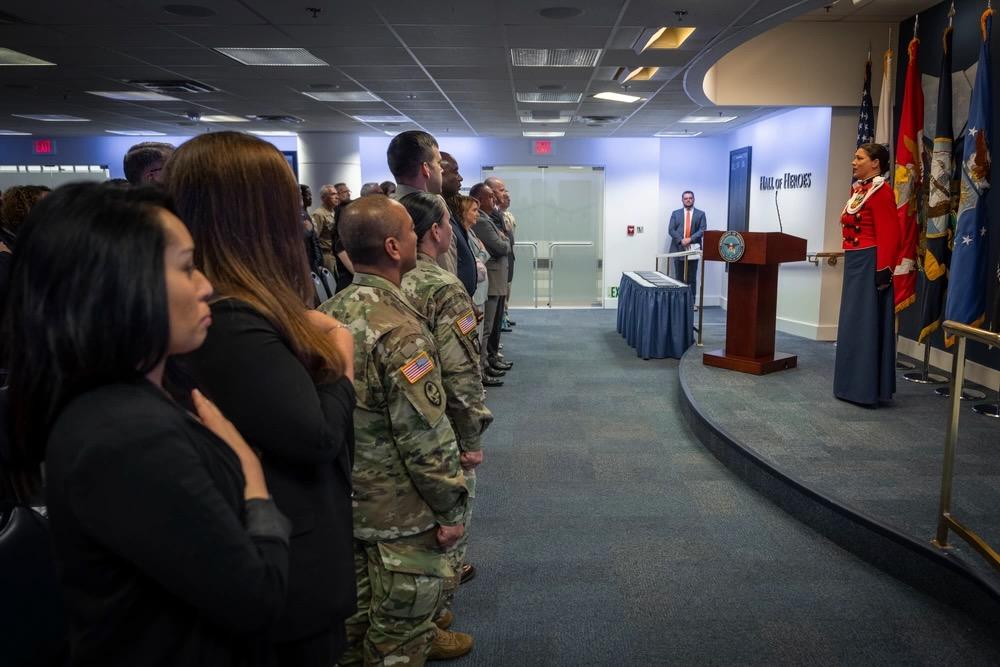Suicide Prevention Program Not Ready for Additional IT
While the U.S. Department of Defense is working to pull emerging technologies into sensors, weaponry, decision-making and many other aspects of warfighting, the military is not directly pursuing information technology measures to help prevent suicides. The department, through recommendations from the Suicide Prevention and Response Independent Review Committee (SPRIRC), is instead pursuing more foundational measures to tackle such a difficult and heartbreaking problem.
In March, the Department of Defense established the SPRIRC to study suicide prevention and response activities and identify existing policies and programs. The committee, which visited global military installations, led focus groups and spoke individually with soldiers, made a series of comprehensive recommendations to help eliminate suicide in the military. In late September, the secretary of defense announced the pursuit of 111 measures based on the SPRIRC’s recommendations.
The secretary’s September 26 action plan included new and continued support for existing efforts. Overall, the department is aligning its efforts: to foster a supportive environment; improve the delivery of mental health care; address stigma and other barriers to care; revise suicide prevention training; and promote a culture of lethal means safety. The Office of the Secretary of Defense will now be coordinating with the services to implement the specific actions. The services need to submit implementation plans for all actions by March 31. Full implementation is expected by 2030 or sooner, if possible.
In calendar year 2021, 519 service members died from suicide, including 328 active duty, 74 Reserve and 117 National Guard members. The problem impacts military family members, with 202 suicides by military spouses (133) as well as dependents (69) in 2021, according to the annual report on suicides from the undersecretary of defense for personnel and readiness. In 2022, the military had 492 suicide deaths (332 active duty, 63 reserve and 97 Guard). Already in the first quarter of 2023, 94 active-duty soldiers have died by suicide, 18 reservists and 23 National Guardsmen.
“Suicide is a deeply complex problem, and there is no one single cause, risk factor or solution to these tragedies,” said Elizabeth Foster, executive director, Office of Force Resiliency, Department of Defense, speaking during a September 28 media roundtable. “What may lead to suicide will look different for every single person, and often one person will experience a multitude of risk factors. You cannot solve this problem by isolating one risk factor. You have to take a holistic approach, and to be truly effective, you have to look far upstream of the point of crisis. If you’re doing this right, this is as much about well-being promotion as it is about suicide prevention.”
Department leadership, however, declined to pursue 16 measures, including the SPRIRC’s recommendations to directly bring in additional information technology resources that could help warfighters, explaining that “after careful consideration,” the measures were “not feasible for implementation at this time.”
SPRIRC had recommended that the department create a specific task force to “improve the usability and reliability of military information technology systems while balancing various security needs.”
The committee had also specifically advised that military installations and units be properly resourced with computers, printers, internet connectivity and other hardware and systems, and recommended further that the department ensure that all military workplaces implementing suicide prevention “have a sufficient inventory of computers and access to high-speed internet for personnel to efficiently complete mandated trainings.”
A department official told SIGNAL Media that some of the information technology-related recommendations were not included in the secretary’s September 26 list of actions “as many of these recommendations are currently being implemented or evaluated for action at other levels within the department.”
In addition, Timothy Hoyt, deputy director, Office of Force Resiliency, speaking at the same September 28 press conference with Foster, clarified the stance on the IT-specific actions. “There were some SPRIRC recommendations that generally indicated that we should improve the usability and reliability of information technology systems or ensure that military installations and units are properly resourced with computers,” he said. “Those are listed in the memo as ‘recommendations not approved at this time.’ But that doesn’t mean that we are not working on those through other efforts throughout the department. There are other efforts going on in terms of access to information technology, leveraging technology to better address the concerns that we’ve got in our service members. Just those specific action items were among those not approved for action at this time.”
Meanwhile, the department is heavily pursuing training advancements, including revising suicide prevention training and curriculum, and there, the possibility for information technology advancements will be considered, the official said.
The revised training will aim to comprehensively modernize the content, delivery and frequency of suicide prevention instruction. Behavioral health technicians will be trained in evidence-based practices, according to the department. In addition, leaders, across the total force—active duty, Guard and reserve—and at all levels will be taught about suicide prevention.
“Revising these suicide prevention training models, we are going to modernize the content and delivery so that in the course of a service member’s entire career, they’re getting training that is tailored to their role and getting training that is evidence-based,” Hoyt stated.
The current approach to suicide prevention training is similar among the services, with training led by instructors or subject matter experts. And notably, instruction includes virtual options in most cases, “ranging from live, virtual instructors to web-based trainings, depending on need, availability and objectives,” the official stated. In the event a suicide does occur, training efforts are naturally expanded within that location at the discretion of field leadership.
“The department is actively planning for the implementation of training-related actions based on the SPRIRC recommendations,” the department official said. “During the planning phase, the department will consider how technology and information technology improvements will impact the implementation of the new DoD actions to prevent suicide in the military. The Defense Suicide Prevention Office will develop the core curriculum for this revised training, which will allow for tailoring to meet the unique needs of each of the military services, to include the National Guard and reserve.”
To provide a more supportive environment overall for warfighters, the department is pursuing better predictability in soldiers’ schedules and after-hours communication. The military also committed to promoting leaders who focus on improving support to service members and their families.
“To foster a supportive environment, this builds on a lot of the initiatives that the secretary has already pushed forward in terms of taking care of people,” explained Hoyt. “It really gets at alleviating stress around improving predictive predictability for the service member. This goes all the way down to the tactical level in terms of understanding what is the day-to-day life going to be in terms of predictability, as well as then how does the training calendar look for predictability, and long-term, how does their career look in terms of how well they can predict and make sure their goals are fitting with their career goals.”
The services are expected to facilitate a more supportive culture for getting help for suicidal concerns and depression. One way is to provide more access to care, through increased appointment availability, more mental health staffing improvements and advancing the coordination of mental health care and better recruiting and retention of behavioral health providers. Other steps to lessen the stigma of mental health issues and eliminate barriers to care include the expansion of counseling services for suicide prevention, adding mental health services as part of primary care and making mental health care available through telehealth services.
“We are working to meet service members where they are,” Hoyt said.


Additionally, given that many suicides involve firearms, steps will be taken across the services for safer storage, including public education campaigns, incentivizing secure firearm storage, greater gun safety in barracks and dormitories, and providing additional safe-storage facilities for firearms on installations.
“The department remains committed to reducing the number of deaths by suicide throughout the armed forces and is pursuing an aggressive timeline for planning and implementation of the secretary’s five lines of effort, prioritizing the most impactful actions to set a foundation for long-term progress,” the official stated.
If you or anyone you know is experiencing thoughts of suicide, you are not alone. Call the Veteran’s Crisis Hotline at 988 and visit veteranscrisisline.net/ to learn more.






Comments